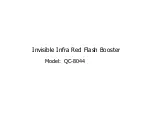
ELECTRICAL SYSTEM AND BATTERY CHARGER
Page H-7
Repair and Service Manual
Read all of Section B and this section before attempting any procedure. Pay particular attention to all Notes, Cautions and Warnings
The most probable cause is one diode shorting and
blowing one fuse. Refer to “Charger DC Fuse Blows” for
procedures to check the diodes. If a diode is shorted,
both the failed diode and the failed fuse assembly must
be replaced.
If testing shows the diodes to be good, check for a short
circuit of the transformer coils. See “the transformer has
a short or burnout”, for test procedures.
Charger DC Fuse Blows
The charger fuse consists of two fusible links mounted in
a single assembly and the charger front panel. Each fuse
link is electrically connected in series with one diode to
provide protection for the transformer in the event of fail-
ure of the diode.
Fuse links may blow because of either a reversed polar-
ity between the charger and the batteries or a short cir-
cuit failure of one or both diodes. Excessive heat due to a
loose internal fuse connection can also cause one or
both fuse links to blow.
1. Check for reversed polarity (which normally causes
both fuse links to blow) by checking for:
A) Incorrect installation of batteries, or improper wir-
ing. Consult the wiring diagram.
B) Faulty wiring of the charger output leads. If both
are correct go to next step.
2. Unplug the AC supply cord.
3. Disconnect the DC output leads from the batteries.
4. Remove the charger from the vehicle.
5. Disconnect one transformer secondary coil lead from
the diode terminal (Ref Fig. 6 on page H-7).
6. Connect one lead of a low-voltage continuity tester to
the diode mounting plate and the other lead to a
diode terminal. Note the reading.
7. Reverse the tester leads and check the diode again.
Perform the test-and-reverse procedure for each
diode. If a diode conducts current in both directions,
the diode is shorted and the entire heat-sink assem-
bly with diodes must be replaced.
If the above steps fail to reveal the malfunction, check
the wiring of both the charger and the battery connec-
tions against their respective wiring diagrams.
Electronic Timer Testing
Batteries must have 70% of nominal voltage
for the electronic timer to start and charger to
operate properly.
If the battery pack has discharged below the 70% rate as spec-
ified above, the automatic charger will NOT charge the battery
pack. Use a mechanical trickle charger to charge the pack up to
nominal voltage before the automatic charging process takes
effect.
For example, you may hook two of 6 volt batteries in series to
allow charging by an automotive-style 12 volt charger. Charge
the remaining two batteries to bring the entire pack up above
nominal.
If the electronic timer fails to turn off after 18 hours (max-
imum). Verify that the green wire from the electronic
timer and the secondary transformer lead are securely
connected to the diode lead. If the green wire is loose or
disconnected, the timer will not turn off. If the connection
is secure and the electronic timer will not turn off, the
electronic timer has failed and needs to be replaced.
A simple verification procedure, using a DC voltmeter
capable of reading in increments of 0.001 volts, is to
charge the batteries normally and connect the voltmeter
to the battery terminals after the charge rate has tapered
to its lowest point. The electronic timer should shut off if
an hourly check of the reading shows increases of less
than 0.012 volts, or if it shows a voltage decrease
between readings. If the timer does not shut off, a mal-
function is indicated and the electronic timer must be
replaced.
The electronic timer may be bypassed in order to verify
that a malfunction exists:
1. Unplug the charger AC supply cord from the outlet,
and disconnect the DC output connecter from the bat-
tery connecter. Remove the charger from the vehicle.
Fig. 6 Voltage Test
5658
Summary of Contents for MINUTE MISER
Page 7: ...Page iv Repair and Service Manual TABLE OF CONTENTS Notes...
Page 11: ...Owner s Manual and Service Guide SAFETY INFORMATION Page viii Notes...
Page 27: ...SAFETY Page B ii Repair and Service Manual Notes...
Page 37: ...BODY Page C ii Repair and Service Manual Notes...
Page 41: ...WHEELS AND TIRES Page D ii Repair and Service Manual Notes...
Page 45: ...BATTERIES AND CHARGING Page E ii Repair and Service Manual Notes...
Page 55: ...ELECTRONIC SPEED CONTROL Page F ii Repair and Service Manual Notes...
Page 61: ...MOTOR Page G ii Repair and Service Manual Notes...
Page 67: ...ELECTRICAL SYSTEM AND BATTERY CHARGER Page H ii Repair and Service Manual Notes...
Page 81: ...Page J ii BRAKES Repair and Service Manual Notes...
Page 87: ...BRAKES Page J 6 Repair and Service Manual Notes...
Page 89: ...REAR AXLE Page K ii Repair and Service Manual Notes...
Page 95: ...PAINT Page L ii Repair and Service Manual Notes...
Page 99: ...LIGHTNING PROTECTION AND GROUNDING Page M ii Repair and Service Manual Notes...
Page 105: ...GENERAL SPECIFICATIONS Page N ii Repair and Service Manual Notes...
Page 109: ...Page N 4 Repair and Service Manual GENERAL SPECIFICATIONS Notes...
Page 111: ...STEERING Page P ii Repair and Service Manual Notes...
















































